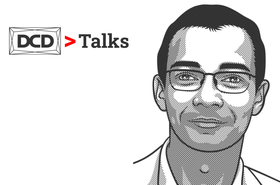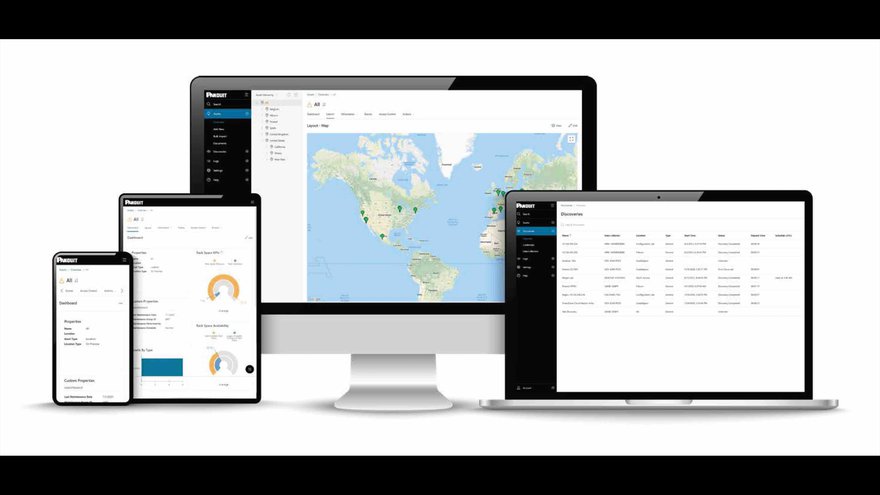IT is strategic to users of all shapes and sizes. The cloud, big data, social applications, and mobile technologies are constantly offering new opportunities to serve customers, enable the workforce, and optimize costs. The drive for higher data utilization is creating pressures in both on-premise and hosted data centers to respond with evermore efficient and customer-focussed solutions.
Companies are responding to this requirement by launching new business initiatives and utilizing the IT latest infrastructure to support them. Organizations are learning that corporate and IT agility is essential for successful customer implementations and success.
Growing numbers of organizations are targeting an agile approach to IT that encompasses not only a company’s on-premises data center but also hosted IT facilities, such as those of a colocation service. Using a colo enables customers to choose the optimal space to run customer engagement applications. This provides scope to scale resources quickly when required and descale when required.
Planning for hybrid infrastructure
A hybrid data center strategy requires the implementation of physical infrastructure that equally supports both the on-premises as well as the hosted facility. The solutions should be geared to deliver maximum data center efficiency regardless of location. The key to attributes will include:
Advisory and design services are essential. There are many issues to consider in a hybrid strategy, ranging from correct duct and conduit location to the lease and warranty status of equipment. Consultants offer wide-ranging experience and can provide evidence-based recommendations and assistance in all phases of the hybrid initiative.
Converged infrastructure partners offer benefits. The solution should offer consistency in quality and reliability. Key supplier partnerships will provide a full line of data center infrastructure equipment, reducing the requirement and additional complexity resulting from multiple suppliers, Consultants can often assist organizations with reference material on leading OEMs and help reduce the problems associated with the purchase of substandard aftermarket equipment, or mix and match infrastructure components, which could lead to compatibility issues.
Ensuring the tech works through strategic alliances. Working closely with leading IT equipment providers such as Cisco, VCE, and Dell/EMC, Panduit provides a wide range of intelligence, server, storage, and networking systems. This enables customers to benefit from compliant infrastructure solutions to maximize the efficiency and performance of each piece of equipment.
Is the partner the right fit. Equipment should be designed to work together so it can be deployed without delay and enable businesses to meet their agility goals.
Intelligent monitoring solutions have become essential. The latest cloud-ready DCIM monitoring capabilities offer fully featured intelligence solution that provide managers complete visibility, from anywhere, of both the on-premises as well as the remote facility, encompassing electrical power, space utilization, thermal risk management, asset tracking, and cabling.
Hybrid data center best practices
When a company signs a contract with a colo, the success of the initiative depends on the ability of the company’s IT leaders to retain a firm understanding on the colocation’s contractual responsibilities as well as data center performance and physical infrastructure.
It’s also important to remember that when a colo is used, there is no reduction in ultimate responsibility on the part of the customer IT leader. Uptime is just as important at a remote facility as it is in an on-premise facility because a company’s reputation will suffer from downtime, regardless of where it occurs.
The customer’s technology needs are also varied. One may require the colo to provide the majority of the infrastructure, and complete managed service. While another may only need a minimalist approach, and implement a unique solution, others may share cabinets and servers. The Colo provider may also acquire the infrastructure of a customer, then run and manage it in the hosted facility. For a company with lots of data center experience it may simply require electrical power and install its own infrastructure.
Whatever the situation it is the IT leader’s responsibility to be knowledgeable of the physical infrastructure – whether provided by the company or the colo. It is a task made easier by the latest tools. A fully featured data center intelligent monitoring solution will go far toward enabling a successful engagement with the hosting provider by helping to manage:
Electrical power. Since the colo will typically pass along electrical power to the customer, it is smart to minimize power use to keep electrical costs as low as possible. A complete monitoring system will give visibility into whether power is being used economically or not.
Space. The space used within the hosting provider’s facility should also be conserved, since rent typically depends on the amount of space occupied. If expansion is required, it will be easier to accomplish if space is already being used efficiently. A robust monitoring system presents an accurate map of the data center and the equipment within it.
Thermal risk management. Although a colo may provide ambient temperature readings, it may not supply readings for individual pieces of equipment. Hot spots and the equipment failures they cause may remain the customer’s responsibility. A full-featured monitoring system will provide complete thermal information to reduce incidents and generate warnings of problems before they occur.
Assets. Intelligent monitoring systems track IT equipment and provide information on relevant attributes. This ensures the business knows what equipment is at the hosted facility, including lease and warranty status.
Cabling. When data center servers, storage equipment, and networking devices are changed or moved, cabling adjustments must be made. Monitoring systems will provide information as to where in the hosted environment connections are located and alert an administrator to where a port might need to be programmed to receive a connection. The system can provide the information needed for administrators to instruct a remote worker where to patch. This level of automation helps to avoid human error, which is the source of most downtime.
Physical security. In a hosted facility, the ability to prevent unauthorized access to IT assets – as well as to permit access by authorized administrators – is critical. Cabinet doors should have locks that can be operated locally or remotely. A monitoring system should document each time a cabinet is accessed and should trigger alarms for unauthorized access. A security camera to monitor the assets is also desirable.
Compliance. Responsibility for regulatory compliance continues even when IT equipment and the data they contain are housed at a remote facility. Those assets may be audited for compliance with security, health, and safety standards.
By providing visibility into the data center infrastructure at the remote facility and into the on-premise data center with architectural diagrams, heat maps, a full-featured monitoring system such as SmartZone™Cloud offers the ability to manage a hybrid IT environment efficiently and consistently.
Conclusion
The speed to market is increasing highlighting organizations’ need for agility in business and IT strategies. An effective strategy to enable business agility, particularly for systems of engagement, is to augment an on-premises data center with the remote facilities of a colocation. In this way, computing, storage, and network capacity can be added quickly to meet opportunities as they emerge.
Understanding the requirement for data center physical infrastructure means demanding high-quality equipment both on-premises and at the remote facility. With this approach, customers can gain maximum efficiency and consistency. In addition, a full-featured monitoring solution gives IT leaders integrated visibility and control over both on-premises and remote data centers. Combined with automation, such a monitoring solution helps maximize efficiency at both local and remote data centers. As a result, customers’ businesses are able to achieve their mission with greater agility and at lower cost, thus reaping the full benefits of a hybrid data center strategy.
Visit www.panduit.com for more information
More...
-

Sponsored Move fast and make things
Kitting out data center cabinets, racks and PDUs can take months, but Panduit claims its new modular approach can slash the time it takes to a matter of days
-

DCD>Talks supply chain and increasing 'value' with Michael Akinla, Panduit
In this DCD>Talks, we sit down with Panduit's Business Manager, Michael Akinla, and discuss what's happening in the data center market, and how we can increase our value
-

The financial worries for the data center industry
And how Panduit is facing them



